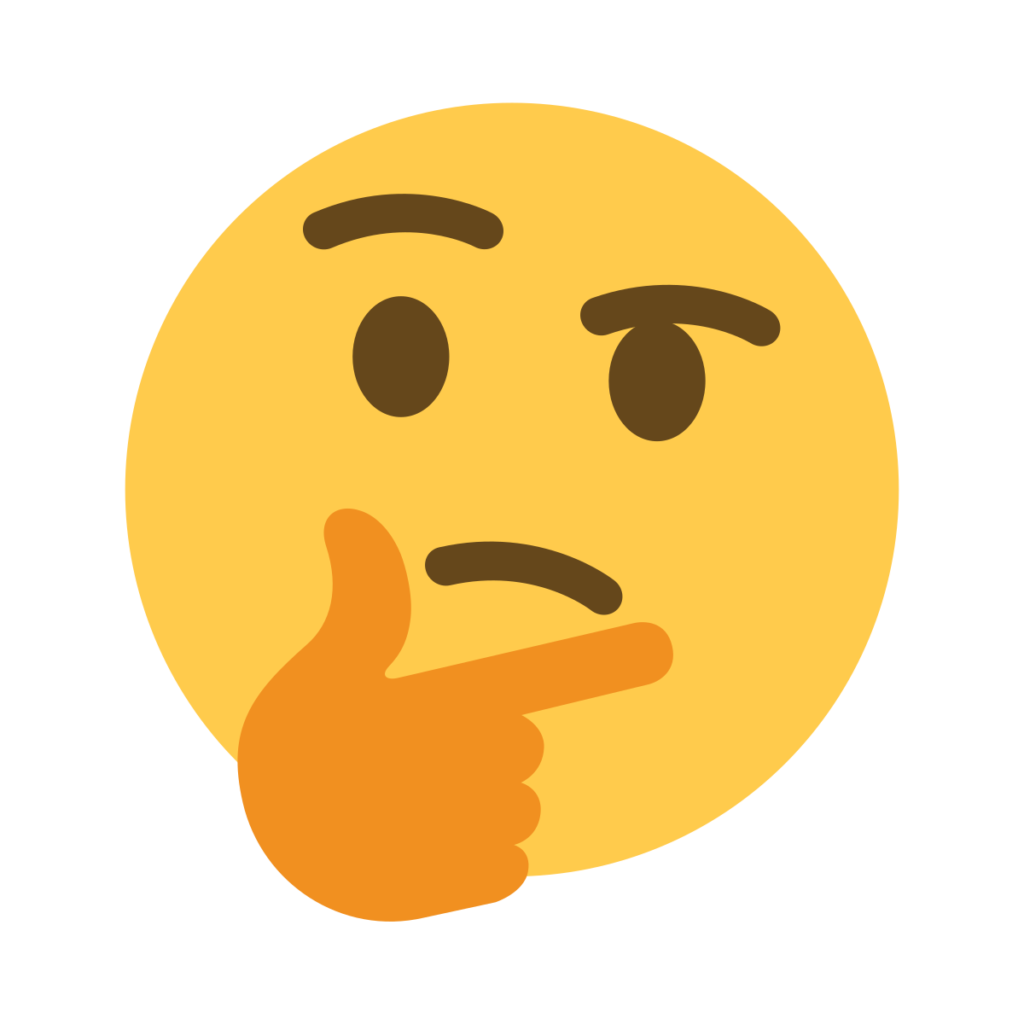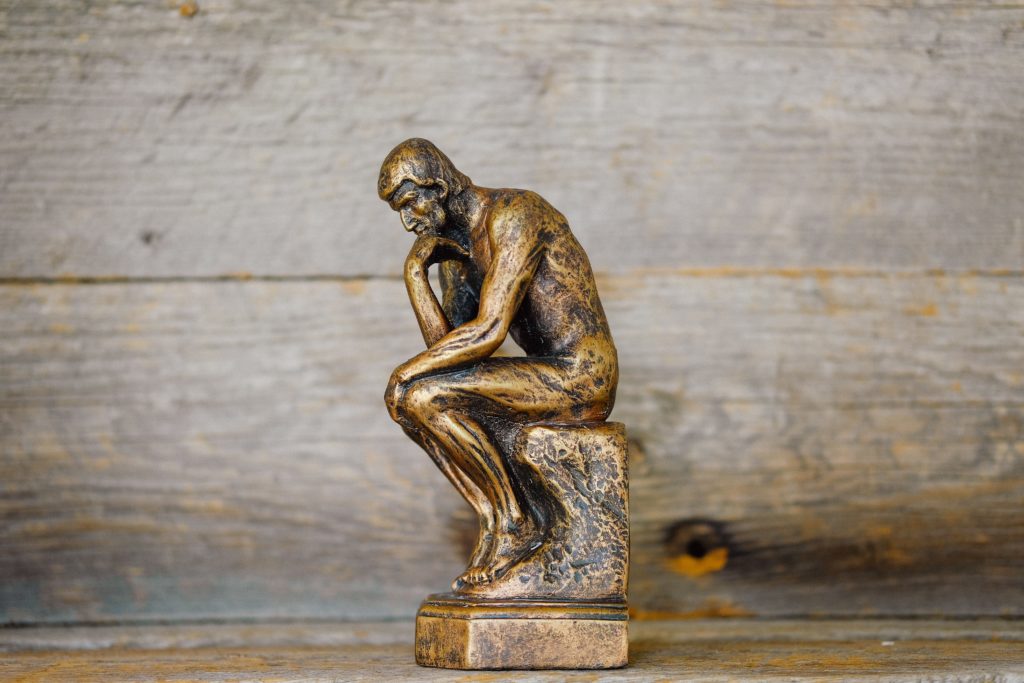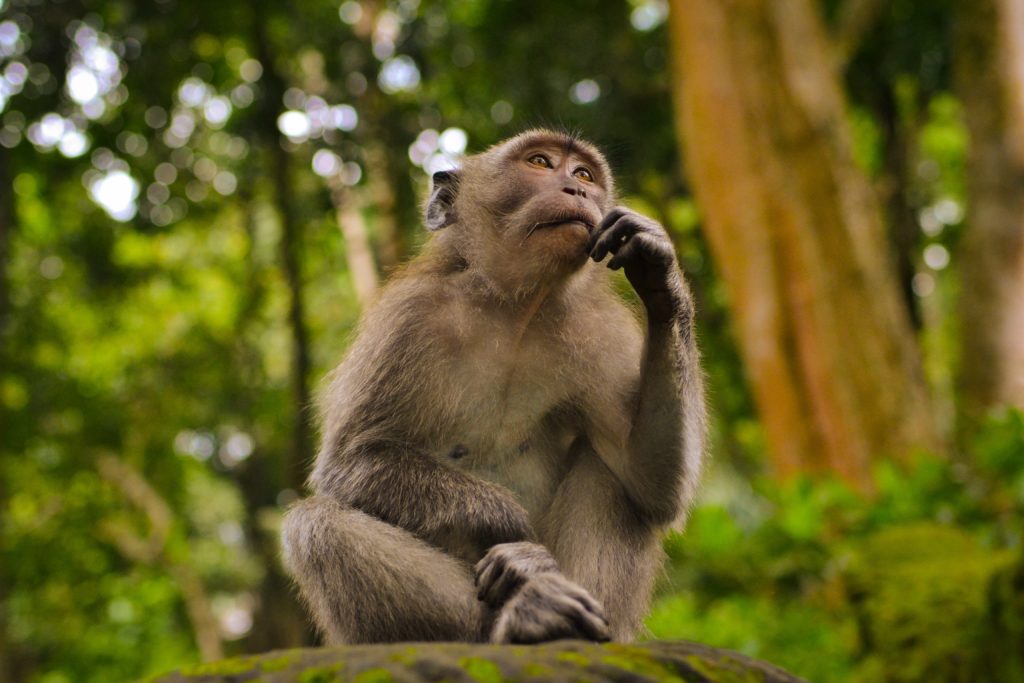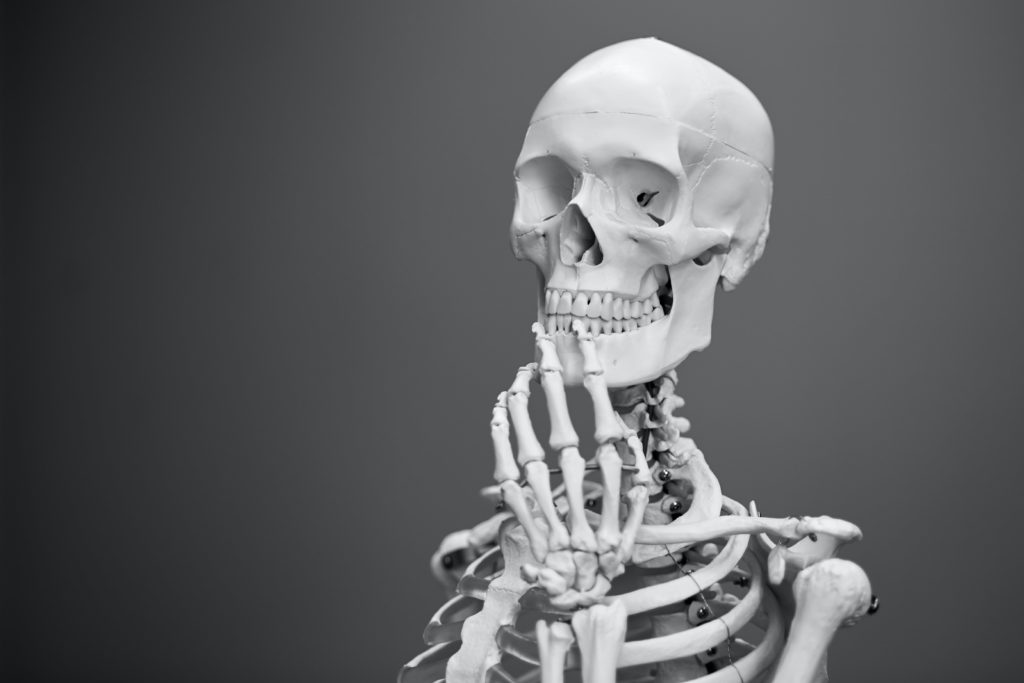We shifted towards our present cognitive artform nearly two hundred thousand years ago, and have been going and growing strong in our minds every since. The human brain has branched into a multi-faceted think tank over thousands of millennia, and today, we mentally function at an impressive rate and are capable of so much by just thinking. In fact, this minimal way of saying it refers to the compound thought process that precedes and collaterally occurs in any situation.
Most of our brains are perfectly capable to think, reason out, contemplate, know about things, question them, and seek answers. The latter is a personal choice, however. Each time we immerse ourselves in an elaborately thoughtful affair, our bodies and especially our faces alter, in a seemingly weird fashion. We’re either squeezing parts of our face, scratching our heads, looking at the ceiling, rubbing our chin, or just zoning out into a blank wall and other embarrassing places.
Our mind’s cognition is so powerful that we can be thinking of ten different things while looking at someone’s backside on a bus – while being totally unaware of this cringe until “we come back to our senses”. What a funny statement. Of all the “thinking gestures” we make, the chin rub stands out – and is, therefore, a defining symbol of our thought process on virtual platforms and otherwise. Much like how we do a lot by “just thinking”, the thinking face emoji personifies the same comprehensive set of thoughts.
Here’s everything about the thinking face emoji, what it means, how to use the emoji appropriately, and what we think of it.

Meaning of 🤔
The 🤔 Thinking Face emoji primarily signifies what the iconic gesture in the pictograph and the name of the emoji suggest – thinking. This emoji symbolizes lateral thinking that goes alongside meaningful textual conversations, and a train of thoughts that could add up to or from a particular dialogue.
🤔 also expresses cynicism and sarcasm towards doubtful and/or questionable scenarios alongside being a wonderful way of throwing shade. It is a mark of undecidedness, indecisiveness, and disinterest too. 🤔 encompasses a state of being lost, daydreaming, and pondering – apart from which, the thinking face emoji is also a virtual way of recalling and reminiscing.
Thinking With Gestures

Thinking, as we know it, is the mind’s activity. It’s a complex function of the brain that involves the ability to create, reason, analyze, store, and organize information received from the senses. All thinking happens in the brain. It’s all in the head. So, when this is the case, why do we have a “gesture” to indicate that we’re thinking. How can something as intangible and existent as a thought process be represented by an illustration that strangely yet effectively describes most of our “thinking gestures”?
Here’s our dig at the question.
When we talk of something we’re passionate about or deeply interested in, most of us find ourselves making hand movements. We feel more at peace and comfortable “talking with our hands” rather than rigidly folding them while conveying what’s heartfelt to us. Our hands also help with a persistent and better flow of conscious thoughts and words.
In short, we talk better when we talk with our hands. There’s an invisible yet strong bond between words and gestures – which is why non-verbal cues like body language help breakthrough, into a person’s thoughts, emotions, and intentions and understand what’s really going on beneath the surface or the facade of a projected impression.
Similarly, thinking without hand movements or gestures can get a little suffocating. There has to be some kind of bodily motion to organize and put together our thoughts. Thinking without any movement, though possible, can be restricting perfect flow and “openness”.
If you’ve noticed, body movements aid in bodily freedom. Being unable to move can make one feel limited, not to mention sluggish and hardly at one’s best. So, when we make gestures while thinking, we’re in some way improving and influencing our mind’s manner of thought and as a result, we could end up thinking, knowing, and understanding better.
Imagine preparing for an examination. You’re studying, not necessarily hard, but smart. To smartly study is to better understand a concept – and the best way to comprehend something is to not only study with your mind but your body as well. There will be better memory retention, better interest, better creative energy, and better mood to study and ace the subject with gestures and body movements than with none at all.
So, conclusively, it’s not necessary to think with gestures, but when we do, it only enhances the thought process and helps expand it. Therefore, we have, indeed, a gesture for thinking, and this gesture not only represents most thinking gestures but also the cognitive efficiency and free flow that branches from thinking and perceiving with physical movement.
Significance of 🤔

Furthering the ‘Meaning’ of the thinking face emoji – 🤔 suggests mentally working out possibilities, recollecting moments and memories, figuring out, questioning possibilities, and even deciding and choosing between some tough options. It can also denote the person’s poor or conflicting memory, given how often they use it.
As mentioned before, 🤔 is a great way to criticize. It brings in an instant element of doubt, disbelief, and a strong sense of being unimpressed – the key ingredients of discouragement. It can also be a signal to rethink, reimagine, rearrange or reprioritize things as well. Though casual, this emoji is the perfect recipe to plant and grow doubt in the smallest ways. And though a “thinking” emoji, 🤔 if often the “I don’t think so” emoji too.
The 🤔 thinking face emoji is most likely an expression of thinking strategically, analytically, and reasonably. It’s the face of deep thinking, endless thoughts, and a manner of being lost in thoughts. It’s the look of wondering, pondering, trying to make sense of things, or thinking of something. In any genuine case (devoid of sarcasm, mockery, or skepticism), this emoji is symbolic of profound thinking.
Non-Significance of 🤔
Despite the inclusive nature of the thinking face emoji, there are a couple of things this emoji does not signify. To decipher that, we need to look at the root of this emoji – our thinking face.
Many gestures in real life have certain notions connected to them and some that aren’t. This norm applies to emojis as well. With the ‘thinking face’ everything except fond thinking – thinking of love, someone you love, romance, etc., aligns with this gesture. This emoji and the real-life gesture are representative of objective thoughts and sometimes subjective thinking that doesn’t include love and affection-based thoughts.
What it Means When Someone Sends 🤔
The most obvious assumption behind a 🤔 is that the sender is thinking about/of something. However, that’s not always true as described in the previous segments. Besides, context alone can define this emoji. Apart from this emoji’s traditional interpretations, it can be a way of seeking opinion, assurance, guesses, and expressing uncertainty.
There are many more ways 🤔 can be applied in different conversations – and all of it without romantic intent because there’s hardly anything romantic about this emoji! And that’s how it doesn’t even think romantic thoughts. So, there would rarely be any categorical ambiguity when someone sends this emoji irrespective of the group they fit into – strangers, acquaintances, friends, and dates. They’re all thinking, or applying their minds in different ways – through thought processes.
Setting the obvious out of the list, here are a couple of things that resonate with 🤔 and what it means when someone sends it:
- The sender is unsure of/about something you sent.
- They’re asking for a second or first opinion.
- 🤔 can accompany any 5W and 1H text message (what, why, where, who, when, and how).
- They may be hinting at disinterest or indifference.
- They could be dodging things with this emoji.
- 🤔 can be used to show they don’t believe/buy something you sent.
- They’re probably criticizing you.
- The sender’s trying to recall something or is having you do it.
- They’re putting together the pieces you just gave them.
- They’re confused.
How to Use 🤔 Correctly

The name of the 🤔 emoji may be a ‘thinking face’ but there’s a lot more happening behind this face. As mentioned before, it’s the face of doubt, uncertainty, skepticism, criticism, forgetfulness, reminiscence, etc. It’s also the face of suspicion, decision-making, mockery, and disinterest. Based on the various subdivisions of the “thinking face”, you can apply it likewise.
Use 🤔 to Show Disinterest
Most people love spontaneity. It shows interest, breeds enthusiasm, and brings people and experiences closer. There’s a notion of not putting in “too much thought” when being spontaneous. So, when someone’s “thinking too much” about something, there’s an irritating delay in execution and experience. There’s an air of being underconfident.
There’s nothing wrong with differing personal approaches to things, events, and experiences, all of us feel differently towards different things. Sometimes we even beg to differ. And if you’re feeling this lack of interest in something that was proposed and you’re desperate to show it and move out of the scenario ASAP, you could use 🤔. Or you could just tell them.
Use 🤔 to Show Mockery/Criticism
Throwing shade is one of this emoji’s strongholds. Holding one’s chin at the sight of someone’s work in any form is a subtle but critical hint. There’s a chance the person does not like, appreciate, or simply finds it deteriorating to one’s capacity, general competition, and standards when they stroke their chin. If you don’t personally vouch for something, then you can criticize with 🤔 and provide constructive feedback. We wouldn’t encourage mockery in any form, but that too is possible with this emoji.
Use 🤔 to Show Forgetfulness
Chin-stroking is an almost universal signal that you’ve forgotten something. It’s a mark of trying with all your might to remember – apart from shutting and squeezing your eyes. 🤔 can be used to show that you have a terrible memory, have mistaken something, have forgotten something, or have something “slipped” out of your mind.
You could also use this emoji to push someone to remember something or just stall in the mutual forgetfulness and hope the other person finds some answers. It can be a symbol of reconfirmation like “Do you remember this? 🤔”.
Use 🤔 to Show Confusion
Expressing confusion on text can be awkward with just words, and that conversation can be eased out with emojis. You could show that you don’t understand someone, their point of view, what they’re trying to say, just plain confusion with 🤔. If you feel stuck at some point in an informal conversation or a formal one backed with reciprocal casualness, then you can use 🤔 to showcase that light or heavy mental turmoil.
Use 🤔 to Show Doubt/ Disbelief/Cynicism/Skepticism
If you don’t buy someone’s thoughts, propositions, suggestions, advice, or opinions, then you could smoothly express disbelief and doubt with this emoji. For instance, “I don’t know about that, man 🤔” or “I’m doubtful about this plan 🤔” or “Umm. Not sure about either 🤔”. If you’re skeptical of the person’s proposal, then just this emoji too can do the trick without words.
Use 🤔 to Ask Opinion/Suggestion/Thoughts
Now this one’s a slight turn of tables. Here, the 🤔 thinking face emoji is to be applied while seeking and not showing. If you’re tied between choices, or if you’re not sure of the workability of something, then you could ask for a second opinion with this emoji. Like, “What do you think of this? 🤔” or “Do you think this is fine? 🤔”.
You may also apply this emoji while asking for someone’s thoughts on something. Many posts on social media boost the comments section by asking for people’s opinions on different things. If you’re shooting posts like that, then too, you can use 🤔 to attract more thoughts and thereby more comments and maybe even direct messages (DMs). You can use this emoji to seek suggestions on a range of things or people too.
Use 🤔 to Decide/Seek Help For the Same
When you’re in the midst of deciding between big choices or making the only choice you have, some indecisiveness or hesitation may linger. Though the solution in such cases is to talk either in person or via a call about the big step, there are times when users resort to the easy way; the textual way. If that’s your chosen comfort zone, then you could apply 🤔, and it would work both to alleviate the awkwardness in asking for help and to clearly convey your stance in the situation.
Use 🤔 to Show That You Aren’t Ready
This use-case touches a little upon the first. A sign of disinterest may also be a sign of not being ready for something. So, if you’re trying to tell someone of your unpreparedness, 🤔 could be a saving grace. This emoji brings about a sense of doubt that can stem from the situation or from one’s potential itself, and can therefore help in showcasing the resulting hesitation to do something or take something forward.
Related Emojis

Thinking is innate to us. It’s a natural function of our brains and this thought process is shown on paper and via art in different ways. Sometimes, it’s a bulb, sometimes a bubble, and sometimes, it’s the organ itself – the physical element of intellect and thought. Thinking is not just powerful but is diverse and as said before, multi-faceted.
So, here are the “thinking emojis” that stand out from the list and can help symbolically interpret cognition.
💭 Thought Bubble
If we were to a philosophical start, we’d say thoughts are like bubbles – until they’re acted upon. By themselves, they’re temporary, fragile, and can be gone with a puff. And, the “thought bubble” emoji, which looks more like a thought cloud, refers to thoughts in that way – immediate and ephemeral. They’re easy to be produced and they can be off in a second. 💭 can also be an efficient way of writing one’s thoughts or animating them without actually encouraging the thought – a manner of thinking out loud.
💬 Speech Balloon
As the name says it, 💬 is a balloon or a bubble for speech. Here, the thoughts have manifested into words and are in the communication process. We added this emoji to the “thought-based” emojis because 💬 is the “typing” symbol online, and anything typed is first thought. Exceptions apply, but we’re talking generally.
When you see this symbol on your screen, it means the other person is typing a message on their device. Now, this typing is essentially a procedure of gathering one’s thoughts and putting them across via text. If you look at it, it’s thoughts again, but in the form of typed words. Another related emoji here is the 🗨️ Left Speech Bubble emoji.
💡 Light Bulb
The incandescent light bulb has been the iconic symbol of an idea for a while now. The reason for this igniting reference could lie in the misconception of the brain “lighting up” when we involve in a task – big or small. The fact is that the brain is always active, but not all of it.
When we indulge in a different activity, distinct from routine – a new, innovative, and creative activity, novel neural impulses fire and transmit information. This firing is at times referred to as “lighting up” and hence, could be the reason for the light bulb to signify the brain, fresh ideas, creativity, and innovation.
🧠 The Brain
Presenting, the seat of all thoughts. The brain! The human brain is one of the most complex and functional brains in the animal kingdom. It’s definitely not the most intelligent amongst all creatures, but can possibly be smarter than any intelligent machine.
Thoughts in the human brain are mainly visual and in most cases a combination of imagery and language. Imagination is our strength and this visualization is what eventually establishes as thoughts and thereafter as anything else depending on the frequency of those thoughts.
In Conclusion
The 🤔 thinking face is a versatile thinking emoji that can be applied to almost every function of the mind. It’s encompassing of the thinking process and other activities such as reasoning, recollecting, analysis, weighing out options, choosing and deciding, along with emotions and traits such as uncertainty, unsurety, indecisiveness, and criticism.
This emoji not only describes one of our most used “thinking gestures” but is also representative of the contemplation that parallelly occurs with it. The prolonged thinking expressed on this face is also used to showcase disinterest, unpreparedness, disbelief, and dubiosity. On the positive flipside 🤔 can depict curiosity and stalling interest as well. This emoji is not just versatile but paradoxical too.